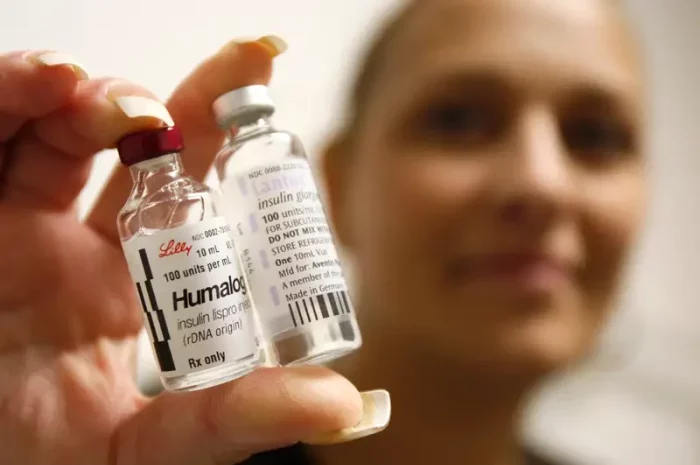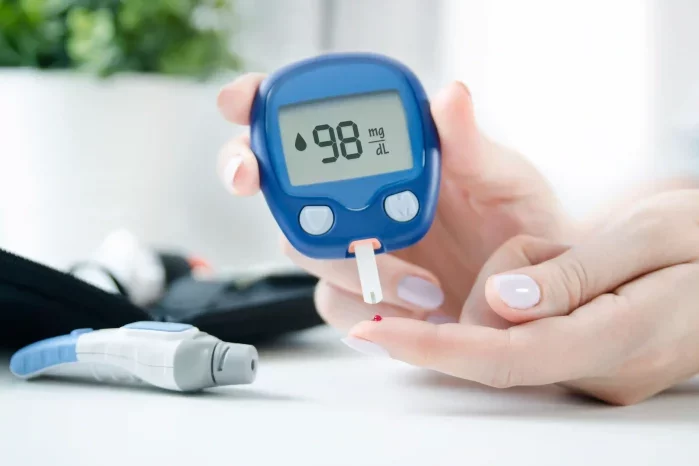Pheochromocytoma, a rare catecholamine-secreting tumor originating from the chromaffin cells of the adrenal medulla, presents with a myriad of clinical manifestations. Among these, hyperglycemia is a significant and intriguing feature. To comprehensively understand why pheochromocytoma causes hyperglycemia, it is essential to delve into the intricate biochemical and physiological pathways influenced by excessive catecholamine secretion. This article will explore the pathophysiology, clinical implications, and diagnostic considerations regarding the hyperglycemic impact of pheochromocytoma.
Pathophysiology of Pheochromocytoma
Pheochromocytomas are neuroendocrine tumors that predominantly secrete catecholamines—epinephrine, norepinephrine, and, to a lesser extent, dopamine. These hormones play a crucial role in the body’s “fight or flight” response, influencing various metabolic processes. The secretion is often episodic but can be continuous in some cases, leading to persistent metabolic disturbances.
Catecholamines and Their Metabolic Effects
Catecholamines exert their effects via adrenergic receptors, which are widespread in tissues such as the liver, pancreas, adipose tissue, and skeletal muscles. Their primary metabolic actions include:
- Stimulation of Glycogenolysis: In the liver and skeletal muscles, catecholamines activate glycogen phosphorylase, leading to the breakdown of glycogen into glucose. This process rapidly increases blood glucose levels, providing immediate energy for muscular activity.
- Inhibition of Insulin Secretion: Catecholamines, particularly norepinephrine, inhibit insulin secretion from pancreatic beta cells by stimulating alpha-2 adrenergic receptors. This reduction in insulin impairs glucose uptake by tissues, contributing to hyperglycemia.
- Stimulation of Glucagon Secretion: Conversely, catecholamines stimulate alpha-adrenergic receptors on pancreatic alpha cells, promoting glucagon release. Glucagon further stimulates glycogenolysis and gluconeogenesis, exacerbating hyperglycemia.
- Enhancement of Lipolysis: Catecholamines increase lipolysis in adipose tissue, leading to elevated free fatty acids in the bloodstream. These fatty acids can be converted into ketones, adding to the metabolic stress and contributing to insulin resistance.
- Promotion of Gluconeogenesis: By increasing substrate availability (glycerol from lipolysis and amino acids from proteolysis) and activating key enzymes in the gluconeogenesis pathway, catecholamines enhance glucose production in the liver.
These mechanisms collectively result in an elevated blood glucose level, forming the basis of hyperglycemia observed in patients with pheochromocytoma.
Clinical Presentation and Diagnosis
Symptoms and Signs
The hyperglycemic effect of pheochromocytoma often manifests as part of a broader symptom complex, including:
- Paroxysmal Hypertension: Sudden, severe episodes of high blood pressure.
- Palpitations and Tachycardia: Rapid heart rate and irregular heartbeats.
- Diaphoresis: Excessive sweating.
- Headaches: Severe and recurrent.
- Anxiety and Panic Attacks: Episodes mimicking psychiatric disorders.
- Weight Loss: Despite adequate caloric intake, due to increased metabolic rate.
Hyperglycemia may be asymptomatic or present with classic signs such as polyuria, polydipsia, and unexplained weight loss. In some cases, it might precipitate diabetic ketoacidosis (DKA), especially in individuals with preexisting diabetes or impaired glucose tolerance.
Diagnostic Approach
The diagnosis of pheochromocytoma involves a combination of biochemical tests and imaging studies. Key diagnostic steps include:
- Biochemical Testing:
- Plasma Free Metanephrines and Normetanephrines: These are metabolites of catecholamines and are highly sensitive and specific markers for pheochromocytoma.
- 24-hour Urinary Catecholamines and Metanephrines: Useful in confirming elevated catecholamine levels over a prolonged period.
- Plasma Catecholamines: Although less commonly used due to the variability of secretion, they can be informative in acute settings.
- Imaging Studies:
- Computed Tomography (CT) or Magnetic Resonance Imaging (MRI): These modalities are the first line for localizing the tumor.
- Functional Imaging: Techniques such as ^123I-metaiodobenzylguanidine (MIBG) scintigraphy, positron emission tomography (PET) with ^18F-fluorodeoxyglucose (FDG), or ^68Ga-DOTATATE can be used for detecting metastatic or multifocal disease.
- Genetic Testing: Given the association of pheochromocytomas with hereditary syndromes like Multiple Endocrine Neoplasia type 2 (MEN 2), von Hippel-Lindau disease, and Neurofibromatosis type 1, genetic screening may be warranted.
Mechanisms Leading to Hyperglycemia
Glycogenolysis and Gluconeogenesis
Catecholamines stimulate hepatic glycogenolysis through the activation of beta-adrenergic receptors, which increase cyclic AMP (cAMP) levels and activate protein kinase A (PKA). PKA phosphorylates glycogen phosphorylase, the key enzyme responsible for glycogen breakdown. This rapid conversion of glycogen to glucose raises blood glucose levels efficiently.
In addition to glycogenolysis, catecholamines promote gluconeogenesis, the synthesis of glucose from non-carbohydrate precursors such as lactate, glycerol, and amino acids. They enhance the transcription of gluconeogenic enzymes like phosphoenolpyruvate carboxykinase (PEPCK) and glucose-6-phosphatase, facilitating increased glucose production.
Insulin Resistance
Catecholamines contribute to insulin resistance through several pathways. The binding of catecholamines to alpha-adrenergic receptors on beta cells of the pancreas inhibits insulin release. Additionally, catecholamines induce lipolysis, increasing free fatty acid levels, which interfere with insulin signaling in muscle and liver cells. This impairs glucose uptake and utilization, further elevating blood glucose levels.
Alteration in Glucagon Secretion
The stimulation of alpha-adrenergic receptors on pancreatic alpha cells by catecholamines results in increased glucagon secretion. Glucagon acts on the liver to promote glycogenolysis and gluconeogenesis, synergizing with the effects of catecholamines to boost glucose output.
Lipolysis and Ketogenesis
Catecholamine-induced lipolysis increases circulating free fatty acids, which are transported to the liver and converted into ketone bodies through ketogenesis. Elevated ketone bodies can lead to metabolic acidosis, a condition often observed in diabetic ketoacidosis, which is occasionally seen in pheochromocytoma patients.
Management of Hyperglycemia in Pheochromocytoma
Preoperative Management
The definitive treatment for pheochromocytoma is surgical resection of the tumor. However, preoperative management is crucial to stabilize the patient and reduce perioperative risks. This involves:
- Alpha-adrenergic Blockade: To control hypertension and mitigate the effects of catecholamine excess. Commonly used agents include phenoxybenzamine and doxazosin.
- Beta-adrenergic Blockade: Initiated after adequate alpha-blockade to manage tachycardia and arrhythmias. Propranolol and metoprolol are often employed.
- Blood Glucose Control: Insulin therapy may be necessary to manage hyperglycemia. Short-acting insulins are preferred for their rapid onset and ease of titration. Oral hypoglycemic agents are generally avoided due to the potential for rapid fluctuations in glucose levels.
Surgical and Postoperative Considerations
Surgical removal of the pheochromocytoma usually leads to a rapid decrease in catecholamine levels, which can result in hypoglycemia, especially if insulin therapy was used preoperatively. Careful monitoring of blood glucose and appropriate adjustment of insulin dosages are essential in the immediate postoperative period.
Long-term Follow-up
Patients require long-term follow-up to monitor for recurrence of the tumor or the development of new lesions, particularly in hereditary cases. Regular biochemical screening and imaging studies are recommended.
Clinical Implications and Prognosis
Impact on Diabetes Management
In patients with preexisting diabetes, the presence of a pheochromocytoma can significantly complicate glycemic control. The hyperglycemic episodes induced by catecholamine surges may require frequent adjustments in medication. Awareness and suspicion of pheochromocytoma in diabetic patients with labile blood glucose levels and paroxysmal hypertension are critical for timely diagnosis and management.
Prognosis
The prognosis of pheochromocytoma largely depends on timely diagnosis and appropriate surgical intervention. Most benign pheochromocytomas, when resected completely, have an excellent prognosis with normalization of catecholamine levels and resolution of associated hyperglycemia. However, malignant pheochromocytomas or those with metastatic disease require a more complex management approach and have a variable prognosis.
Conclusion
Pheochromocytoma, through its excessive catecholamine secretion, induces a multifaceted hyperglycemic response characterized by increased glycogenolysis, gluconeogenesis, lipolysis, and insulin resistance. Understanding these mechanisms is essential for the effective management of hyperglycemia in affected patients. A multidisciplinary approach involving endocrinologists, surgeons, and other healthcare professionals is pivotal in optimizing outcomes and ensuring comprehensive care for individuals with this challenging condition.
Related topics:
























